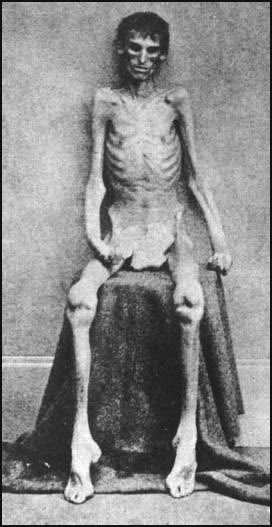The Civil War was the deadliest war in the history of the United States. In all, over 600,000 people died as a direct result of injury in battle, disease, or as prisoners.
|
Union |
Confederate |
Total |
| Killed in Battle |
112,000 |
94,000 |
206,000 |
| Died of Disease |
197,000 |
140,000 |
337,000 |
| Died as Prisoners |
64,000 |
26,000 |
90,000 |
| Total Deaths |
373,000 |
260,000 |
633,000 |
Statistics from Ayers et al. American Passages, p. 518
Deadliest U.S. Wars |
| 1.) U.S. Civil War |
633,000 American deaths |
| 2.) World War II |
405,000 American deaths |
| 3.) World War I |
116,000 American deaths |
| 4.) Vietnam War |
90,000 American deaths |
| 5.) Korean War |
54,000 American deaths |
Note: Figures for tables are approximate
Deadliest Battles of the Civil War |
| 1.) Gettyburg (PA) 1863 |
Between 46,000 - 51,000 casualties |
| 2.) Chickamauga (GA) 1863 |
Apx. 35,000 casualties |
| 3.) Spotsylvania (VA) 1864 |
Apx. 32,000 casualties |
| 4.) Chancellorsville (VA) 1863 |
Apx. 31,000 casualties |
| 5.) Wilderness (VA) 1864 |
Apx. 29,000 casualties |
As is often the case in wars and sieges, the majority of the deaths in the Civil war were caused by disease. Field hospitals often became centers for infection and disease as mass numbers of wounded soldiers would be housed together in filthy conditions with little or no sanitation.
Most of the horrenous injuries suffered by soldiers were as a result of being hit with bullets from "minnie balls." Soldiers hit with such bullets in the head or abdomen nearly always died, but those in the arms and legs suffered considerable damage and often had the affected limbs amputated with various kinds of forceps. Such gruesome tools were not washed properly, and infection spread quickly from one soldier to another, or, from the dirty hands of the surgeon.
In Union and Confederate prisons, prisoners often died from disease, which spread quickly in the deplorable conditions, or died outright from neglect or starvation. In the infamous Andersonville, Georgia (sometimes called Camp Sumter) prison camp, conditions were so horrid that prisoners were described as "walking skeletons." Of the 45,000 total prisoners that were sent to Andersonville, more than one in four died of starvation, dysentery, or another disease.

This Union soldier survived Andersonville